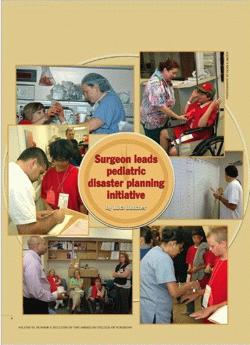
Planning for disaster
An extensive feature in a prominent medical journal documents the ongoing $5 million effort led by Dr. Jeffrey Upperman of Childrens Hospital, an project in which ISI’s Division 2 plays a key role.
From the story in the September issue of the Bulletin of the American College of Surgeons, by writer Lola Butcher: The vision for the Childrens Hospital effort extends far beyond the grant’s timetable. Dr. Upperman is working closely with Robert Neches, PhD, a division director at the University of Southern California’s Information Sciences Institute, on ways to revolutionize disaster-preparation training.
“We’ve been working together to develop not just a way of dealing with children but something that could actually be promoted for all ages,” Dr. Upperman said. “And it has to do with not only having appropriate care standards but being able to share these care standards in a way that all practitioners, even in remote corners of our country, could take advantage.”
Dr. Neches describes the work plan as a set of initiatives needed to support the entire “life cycle” of a disaster scenario. That cycle includes a preparatory phase, in which health care providers identify the supplies, equipment, and personnel needed in a disaster and work to assemble them and train personnel in their use. The second, or response phase, is when disaster response is actually occurring, and the final phase is the evaluation phase, when systemic changes are identified to improve preparedness for future disasters.
Although the activities are focused on disaster planning, they actually support capacity building that will be incorporated into everyday life. “People who respond to a disaster don’t learn new skills,” he says. “They do what they are already good at.”
Click on this link to read the complete story (pdf)
Published on August 11th, 2008
Last updated on June 4th, 2024











